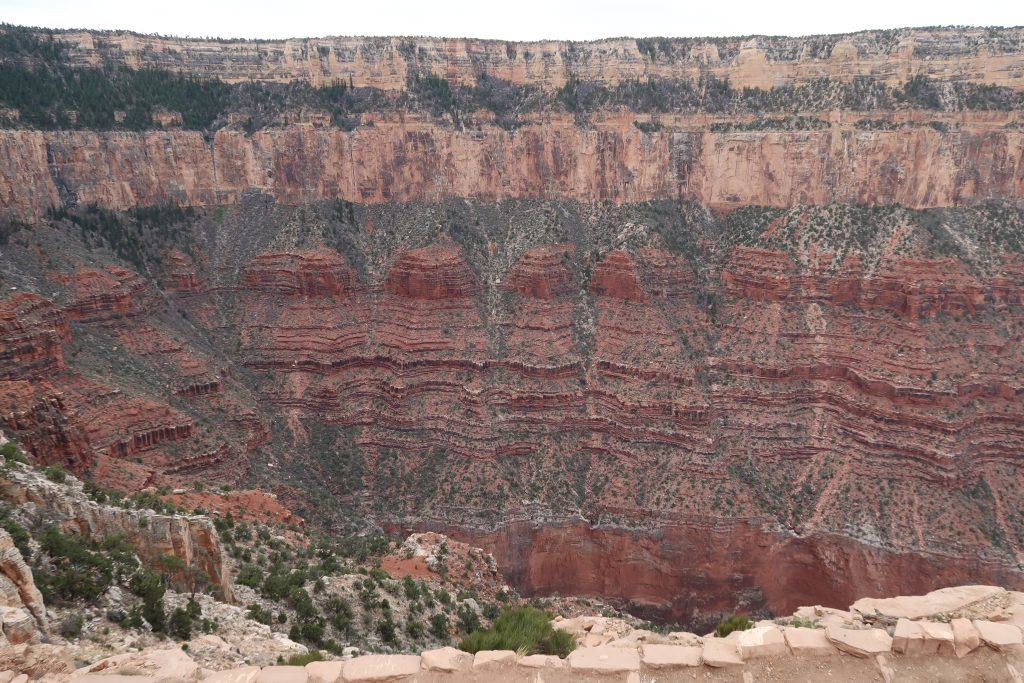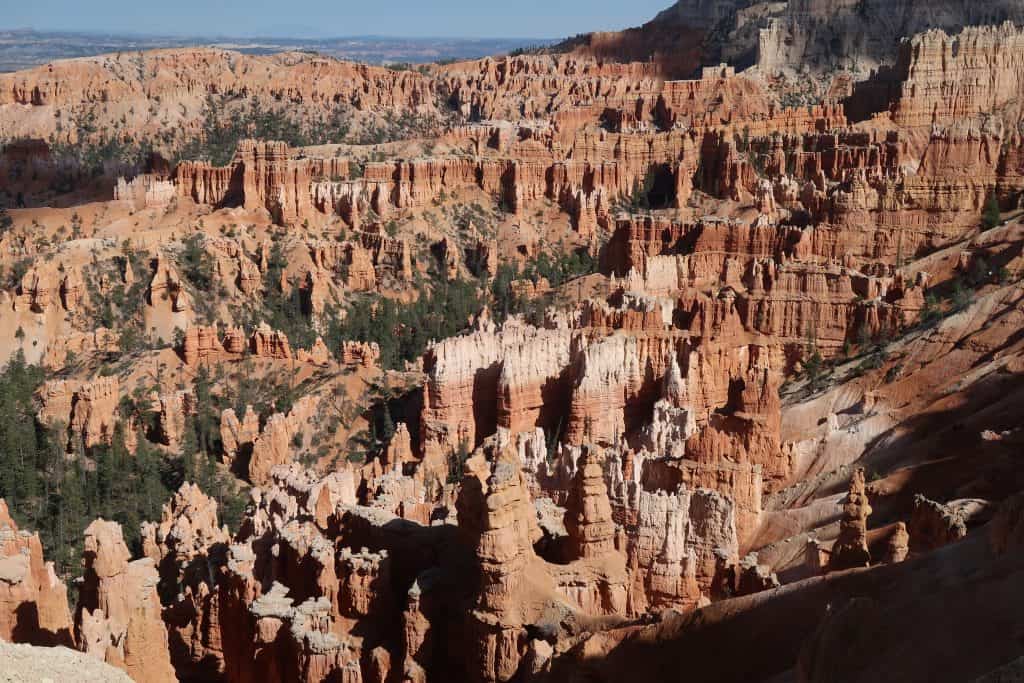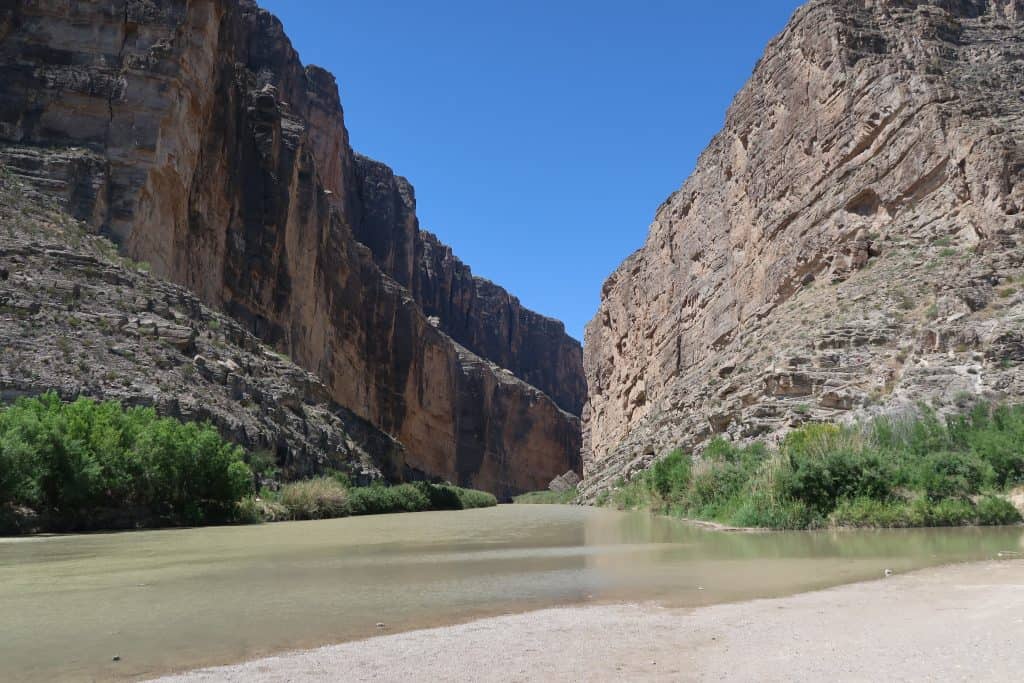The United States National Parks System is home to some of the most magnificent canyons in the world. From the iconic Grand Canyon in Arizona to the lesser-known but equally stunning Canyonlands in Utah, these parks offer breathtaking views and unique hiking experiences. Let’s take a closer look at some of the best national parks in the United States that have canyons!
Grand Canyon National Park, Arizona
The Grand Canyon is one of the most famous canyons in the world and a must-visit destination for anyone interested in natural beauty. The park encompasses over 1.2 million acres and is home to the 277-mile long Grand Canyon which is up to 18 miles wide and over a mile deep.
It is a steep-sided canyon carved by the Colorado River, exposing colorful rock layers that span millions of years of geologic history. The formation of the Grand Canyon began almost two billion years ago when ancient rocks were uplifted and tilted.
Over time, the area was subjected to volcanic activity, followed by the erosion caused by the Colorado River which gradually cut deeper and deeper into the rock layers.

The process of erosion that shaped the Grand Canyon has been ongoing for millions of years and is still occurring today.
What makes the Grand Canyon so unique is its immense size and complex geologic history. It is home to some of the oldest exposed rock formations in the world providing a fascinating glimpse into the Earth’s distant past.
Additionally, the diversity of rock layers and colors found within the canyon is unparalleled making it a geologic wonderland for scientists and visitors alike.
With over 20 developed trails, the Grand Canyon offers a variety of hikes to suit all levels of fitness and experience. From the easy Rim Trail to the challenging South Kaibab Trail, there’s something for everyone here. Read more about activities and attractions at the Grand Canyon.
Bryce Canyon National Park, Utah
Bryce Canyon National Park is located in southwestern Utah and is known for its unique geological formations called hoodoos. The park encompasses over 56,000 acres and is home to the Bryce Canyon which reaches depths of 9,000 feet.

Hoodoos, recognized as tall, thin spires of rock, are formed by the process of frost wedging which occurs when water freezes and expands causing the rock to crack and break apart. Over time, the erosive forces of wind and water sculpted these rock formations into the stunning landscape that we see today.
Bryce Canyon is also unique in that it is not a true canyon. It is actually a series of natural amphitheaters carved out of the edge of a high plateau.
Due to the statuesque hoodoos, the canyon trails at this park are unlike any others. This unique park offers a variety of hikes to suit all levels of fitness and experience. From the easy Navajo Loop Trail to the challenging Fairyland Loop Trail, there’s something for everyone here.
Additionally, the park is home to a diverse range of plant and animal species including several that are found nowhere else in the world. Overall, Bryce Canyon is a testament to the power and beauty of nature, and a must-see destination for anyone who loves the outdoors.
Canyonlands National Park, Utah
Canyonlands is a vast park that encompasses over 337,000 acres and is home to a landscape including deep canyons, towering mesas, and wide open deserts.
The park was formed over millions of years by the erosive forces of wind and water which cut through layers of sedimentary rock to create the stunning geological features that we see today. The Colorado River and its tributaries also played a major role in shaping the park, carving out deep canyons and gorges that are home to a diverse range of plant and animal species.
What makes Canyonlands National Park geologically unique is its incredible diversity of rock formations and landscapes. The park is home to a wide range of rock types, including sandstone, shale, and limestone, which have been shaped by millions of years of erosion and weathering.
The layers of rock exposed in the park also provide a window into the Earth’s ancient history, with some formations dating back over 300 million years. Even the human history of the park is preserved within the rocks of this park.
The park is divided into four main districts: the Island in the Sky, the Needles, the Maze, and the rivers. Each district has ts own unique geological formations and ecosystems.
The “needles” of the Needles District are towering spires of rock that rise up from the canyon floor. The Maze district is a labyrinth of narrow canyons and towering mesas that is one of the most remote and rugged areas of the park.
Each district offers a unique hiking experience, with trails that range from easy walks to strenuous backcountry treks. Canyonlands National Park is a must-visit destination for anyone interested in geology and the outdoors.
Yellowstone National Park, WY, ID, MT
Yes, Yellowstone has it ALL, even canyons. Although the wildlife and thermal features take the cake as the most popular attractions at our nation’s first National Park, the Grand Canyon of The Yellowstone is a stunning site to behold. Enjoy it from a lookout or from a short hike. In spite of its steep competition, this canyon is a site not to miss!
The Grand Canyon of the Yellowstone is known for its stunning vistas of waterfalls, colorful rock formations, and deep canyons. The canyon was formed over millions of years by the erosive forces of the Yellowstone River which cut through layers of volcanic rock to create the steep-sided canyon that we see today.
The rock formations exposed in the canyon provide a fascinating glimpse into the area’s volcanic past with layers of ash, lava, and other volcanic debris visible in the canyon walls.
The Grand Canyon of the Yellowstone is approximately 20 miles long, up to 4,000 feet wide, and up to 1,200 feet deep making it one of the most impressive natural wonders in the park.
What makes the Grand Canyon of the Yellowstone geologically unique is its location in a region of intense volcanic activity. The rocks exposed in the canyon were formed by volcanic eruptions that occurred millions of years ago, and the canyon itself was shaped by the erosive forces of the Yellowstone River.
The canyon is also home to several prominent waterfalls including the Upper and Lower Falls of the Yellowstone River which are fed by the park’s numerous hot springs and geysers.
The colorful rock formations in the canyon including hues of yellow, red, and orange, are also unique and add to the park’s incredible natural beauty. The Grand Canyon of the Yellowstone is a testament to the power and beauty of nature, and it is a must-see for anyone visiting our nation’s first park!
Big Bend National Park, Texas
Big Bend is a remote park that encompasses over 800,000 acres and is located in southwestern Texas. One of its most famous natural features is Santa Elena Canyon which is known for its dramatic cliffs, deep canyons, and stunning views of the Rio Grande River that cuts between two nations.

The canyon was formed over millions of years by the erosive forces of the Rio Grande which carved through layers of limestone and other sedimentary rocks to create the steep walls of the canyon that we see today. The canyon is approximately 1,500 feet deep and stretches for over 20 miles making it one of the most impressive natural wonders in the park.
What makes Santa Elena Canyon geologically unique is its location in the Chihuahuan Desert, one of the largest and most diverse deserts in North America. The region is known for its unique geological features, including ancient volcanoes, uplifted mountain ranges, and the dramatic canyons carved by the Rio Grande. The canyon’s cliffs are made up of several layers of limestone and other sedimentary rocks, which have been shaped over millions of years by the erosive forces of the river.
The canyon is also home to a diverse range of plant and animal species, including several that are found nowhere else in the world.
The hike along the canyon is fun for the entire family, and we highly suggest you consider a kayaking trip to view this majestic site from the “inside.” However you choose to enjoy it, don’t miss Santa Elena Canyon at Big Bend National Park! For more information and to support this national park, please visit the Conservation Alliance.
Read more abou the history of Big Bend or how it compares to Texas’s second national park: Guadalupe Mountains.
These are just a few of the many national parks in the United States that have canyons. Whether you’re an experienced hiker or just starting out, there’s a park that’s perfect for you. So grab your hiking gear and start exploring the magnificent canyons of the United States National Parks System.

